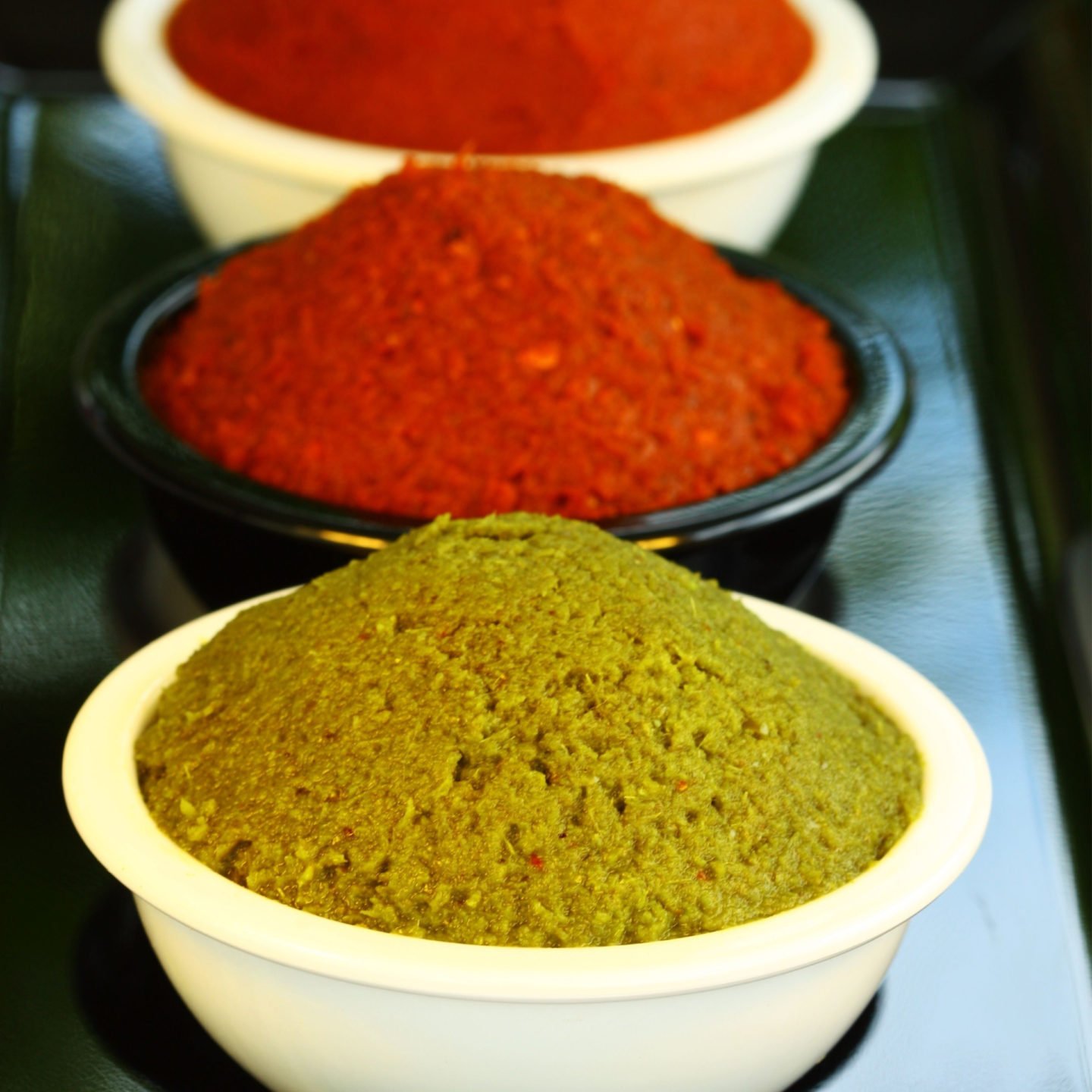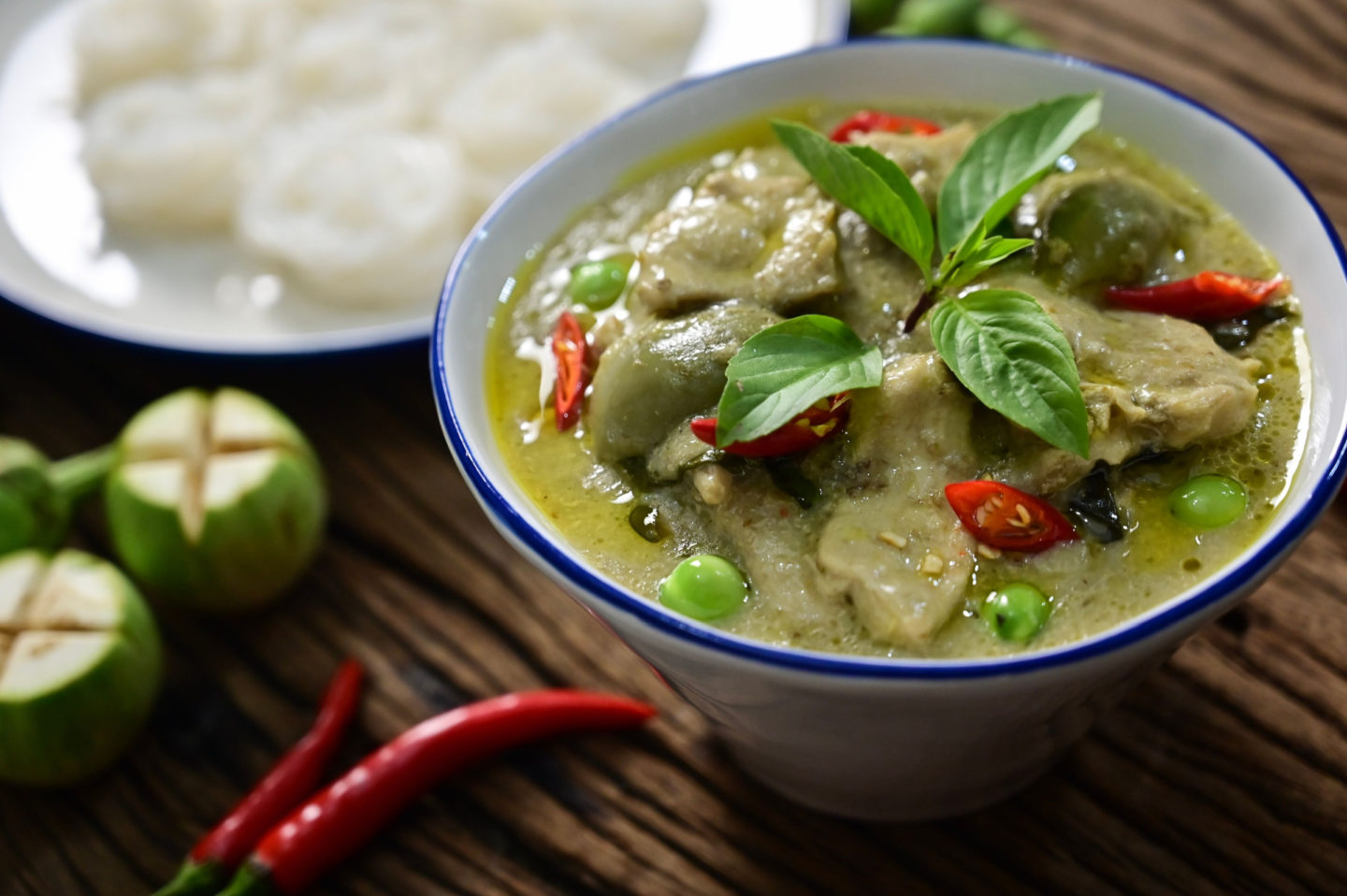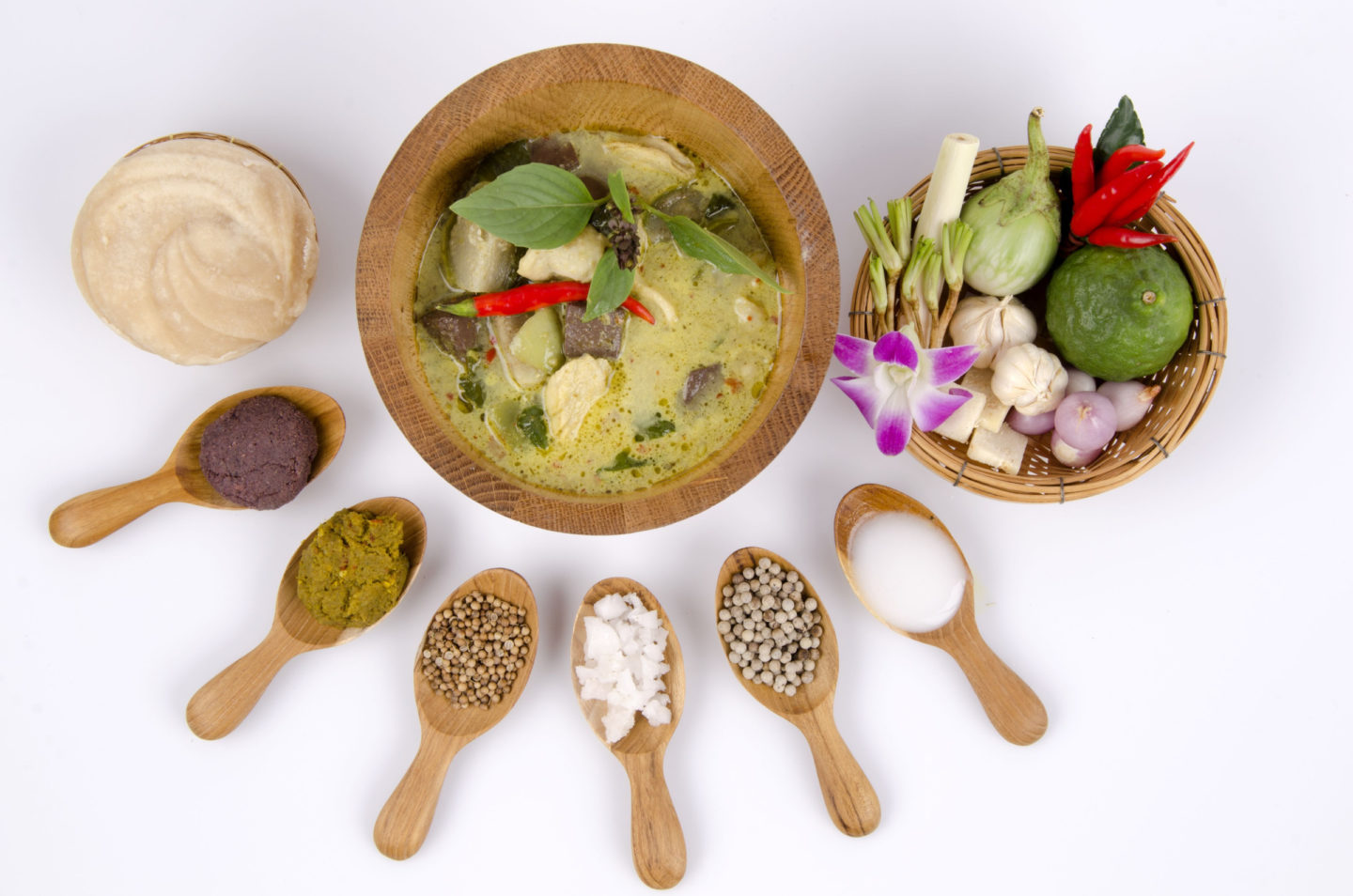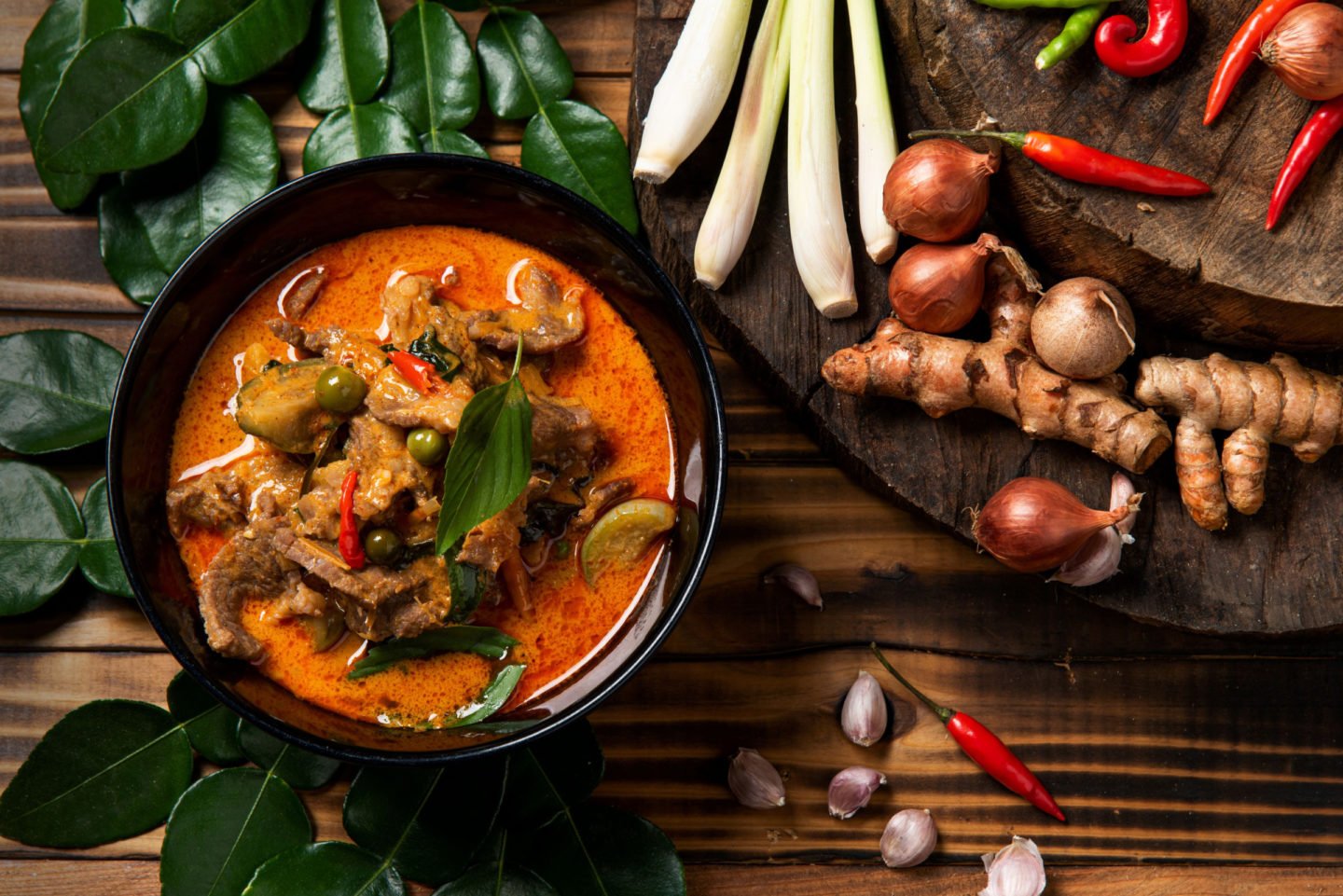Whether you're making a flavorful sauce for meat and vegetables or want to add a quick dash of flavor to your dishes, curry paste is a great choice. There are plenty of different flavors to choose from, but the most beloved are red and green curry paste. However, not everyone knows the difference between these two varieties.

When comparing red vs. green curry paste, we discover that the main difference is the level of heat. While both are spicy, green curry is usually the hotter of the two, as its chiles are combined with cumin, lime, and coriander to enhance its heat.
Learn more about the differences between these two curries below.
What is Thai Curry?

While newcomers to this popular dish may think it's a Thai take on Indian curry, the truth is a little more complicated. In reality, chefs in India don't use the word "curry" to describe their spice-rich sauces. Instead, English colonialists used the word first, and soon Japan, China, Thailand, and the United States had their own versions.
Thai curry is different than others in a few ways. The first is that it is often combined with coconut milk to give the sauce a sweet, nutty, and slightly fruity flavor. The second difference comes down to the ingredients.
While other curries can use any number of spices, all types of Thai curry contain lemongrass, galangal, shallot, garlic, shrimp paste, and white pepper. In addition, depending on the type of curry, you can add other ingredients like chili peppers, peanuts, or even cinnamon.
There are many different types of Thai curry, but the most common are red, green, yellow, massaman, and panang. Each has its own flavor profile and list of ingredients.
Red Thai Curry vs. Green Thai Curry
You won't mistake these curries for one another when they're sitting on your plate, but it's still a good idea to know what makes each unique. See how their ingredients, flavors, and pairings with other foods compare.
Ingredients

As mentioned above, both red and green Thai curries use a base made of lemongrass, galangal, shallot, garlic, shrimp paste, and white pepper. In addition to this classic base, they also have cumin, cilantro root, and coriander seed.
Where they differ comes down to just a few simple ingredients. Red curry contains dried red chiles and cilantro root, whereas green curry does not. By contrast, green curry has fresh green chiles and lime juice, which the red curry lacks.
Flavor
Many people's knee-jerk reaction to seeing these two sauces is to assume that the red curry is hotter. However, making this mistake in a Thai restaurant may just cost you your taste buds. Since green curry uses fresh chiles instead of dried and pairs them with acidic lime juice, it is usually much hotter for those who are unused to it.
While their spice level sets them apart, there are other differences as well. For example, red Thai curry adds a different type of spice to its fiery heat from cinnamon, clove, and cardamom. That makes it a bit more similar to what we think of when we think of Indian curry.
On the other hand, green curry has a much fresher and sharper taste. That is because the lime juice lightens and brightens it, while the fresh chiles add the taste of fresh vegetables to the mix.
Pairing

When used in Thai cooking, both of these curries are used for various dishes. They can be good accompaniments to meat, vegetables, tofu, and seafood. It mostly comes down to a matter of preference.
But if you're looking for tips on which to use in your cooking, try using red curry paste for richer foods like beef and pork. Green curry, by contrast, is better used for seafood and vegetables. Similarly, red curry is analogous to red wine, while green curry is more like white wine.
Frequently Asked Questions
As long as you're comfortable with the difference in spiciness, you can use these two curries more or less interchangeably. However, we wouldn't recommend mixing them if you can avoid it. The lime juice in the green curry will tend to clash with the warmer spices in the red curry.
Yellow curry is a little different than either green or red curry in that it contains fewer chiles than either green or red. It has some dried red chiles, but most of its flavor comes from turmeric, which also gives it its distinctive color.
While all Thai curries have at least some heat, the mildest one would have to be massaman. While massaman curry contains plenty of warmer spices like cinnamon, clove, and coriander, these don't give it the same tongue-scorching heat as chile peppers. Instead, the overall flavor of it is closer to apple pie spice or the flavor of gingerbread.

Leave a Reply